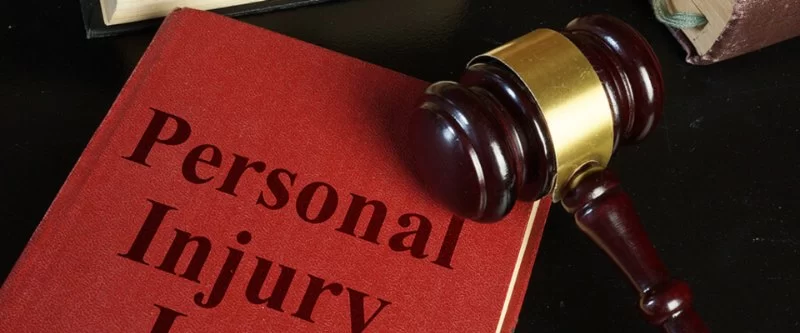How to Handle a Personal Injury Trial: Strategies That Make the Difference
- understanding-the-personal-injury-trial-process - Understanding the Personal Injury Trial Process
- preparing-for-trial-with-your-attorney - Preparing for Trial with Your Attorney
- building-your-case-evidence-witnesses-and-medical-records - Building Your Case: Evidence, Witnesses, and Medical Records
- jury-selection-and-first-impressions - Jury Selection and First Impressions
- navigating-the-courtroom-day-by-day - Navigating the Courtroom Day by Day
- closing-arguments-and-the-verdict - Closing Arguments and the Verdict
- real-life-lessons-from-a-recent-texas-injury-case - Real-Life Lessons from a Recent Texas Injury Case
- should-you-settle-or-go-to-trial - Should You Settle or Go to Trial?
1. Understanding the Personal Injury Trial Process
If you're wondering how to handle a personal injury trial, the first step is understanding the process. Personal injury trials are complex, involving evidence presentation, legal arguments, and procedural strategy. From the moment a lawsuit is filed, the court’s timeline begins ticking, leading through discovery, motions, and finally to trial.
It’s important to know this journey could last several months—or even years. Having a basic awareness of courtroom structure, procedural expectations, and typical case timelines helps reduce anxiety and makes you a more active participant in your own representation.
2. Preparing for Trial with Your Attorney
One of the most critical aspects of how to handle a personal injury trial is collaborating effectively with your lawyer. Your attorney will develop a legal strategy based on the evidence, legal precedents, and likely defenses from the opposing party.
You'll be involved in mock questioning, reviewing testimony, organizing documentation, and deciding which elements of your injury and recovery journey to emphasize. Central Texas Employment Lawyers has guided many clients through this phase, ensuring they're confident and prepared before walking into the courtroom.
3. Building Your Case: Evidence, Witnesses, and Medical Records
Your trial success heavily relies on well-organized, credible evidence. Medical records, expert testimony, photos of injuries, and documentation of financial losses are vital. Your legal team might also subpoena surveillance footage or employer records to back your claims.
Reliable witnesses—especially medical experts or accident scene observers—can influence jury perception significantly. Honest, consistent storytelling supported by documentation builds trust and presents a compelling case.
4. Jury Selection and First Impressions
In a jury trial, selecting the right jury matters just as much as presenting the right facts. Your attorney will participate in voir dire, questioning jurors to eliminate biases that could harm your chances.
First impressions are powerful. From your clothing to your demeanor, how you carry yourself during the trial sends subtle cues to jurors. Remember, you’re not just being evaluated through legal facts—you’re being judged as a person seeking justice.
5. Navigating the Courtroom Day by Day
Once the trial begins, you’ll experience a structured flow of events. Opening statements are followed by witness examination, cross-examinations, and objections that the judge will rule on. It can be emotionally draining, so prepare yourself mentally.
Stay composed and trust your attorney’s judgment. Some days may seem uneventful, but each moment contributes to shaping the jury's understanding. Even your facial expressions during opposing counsel’s statements can influence how jurors view your character.
6. Closing Arguments and the Verdict
Closing arguments are the last chance your lawyer has to summarize your case. They’ll connect the dots between evidence and the narrative that your injuries resulted from the defendant’s negligence.
After deliberation, the jury returns with a verdict. If you win, they’ll award damages, which can include medical expenses, lost income, and pain and suffering. If not, your lawyer will review the outcome and discuss appeal options or post-trial settlements.
7. Real-Life Lessons from a Recent Texas Injury Case
In a 2023 case in Austin, a construction worker who fell due to faulty scaffolding won $1.8 million in damages after a four-day trial. The worker’s attorney from Central Texas Employment Lawyers emphasized clear medical documentation and expert engineering analysis to win over the jury.
The client’s calm, honest testimony stood in stark contrast to the evasiveness of the defense witness. It’s a perfect example of how preparation, honesty, and legal strategy combined to overcome corporate resistance and achieve justice.
8. Should You Settle or Go to Trial?
Deciding whether to settle or proceed to trial is a strategic decision. Trials carry risk, but they can also lead to larger payouts and greater satisfaction if handled properly. Your attorney will weigh the strength of your case, the defense's tactics, and your personal priorities.
If you’re not sure how to handle a personal injury trial or whether trial is right for you, consult experienced professionals. Firms like Central Texas Employment Lawyers provide guidance rooted in years of courtroom experience—and they’ll help you decide what path brings you closest to justice.




